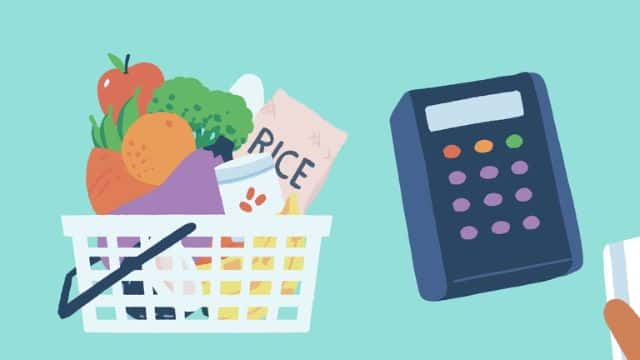Numerous initiatives from the federal government serve as safety nets and sources of assistance for households that are at or below the poverty level.
The Supplemental Nutrition Assistance Program, also known as SNAP or food stamps, is one such programme that aims to assist families who are having financial difficulties providing for their basic nutritional needs.
Like with other government programmes like Medicaid or Welfare, detractors frequently get the SNAP programme wrong and make blatantly false assumptions about how it functions.
We examine some typical SNAP myths and dispel them.
Myth: Fraud on SNAP is rampant.
Although fraud and misuse are sometimes cited as reasons why government support programmes shouldn’t exist, the programme is said to have exceptionally low rates of both.
According to a Time magazine study from 2018, the fraud rate for SNAP payments dropped from roughly 4 cents on the dollar in 1993 to just one cent by 2006. The fraud rate was less than 1.5 per cent as of 2017.
SNAP Is a Charity, a Myth
There is nothing wrong with charitable groups that aid individuals, but SNAP is not one of them.
It’s a government initiative, much like Social Security or Medicare, and it’s intended to support and supplement food for people and families who are having a hard time paying for their basic needs.
Myth: People Use Food Stamps to Purchase Expensive Food or Alcohol
According to Brady McAninch, CEO of HM-Attorneys, “recipients purchase dangerous goods like alcohol and luxuries like crab legs,” which is a common misperception about food stamps. According to McAninch, “SNAP participants buy the same foods as everyone else.”
SNAP and non-SNAP households purchased unhealthy items, McAninch noted in response to opponents who claim that SNAP participants buy more unhealthy foods than others.
For both SNAP-eligible households and non-SNAP households, bread, milk, meat, eggs, fruits, and vegetables accounted for 40 cents of every dollar. Sodas and salty snacks cost 20 cents for every dollar.
For both SNAP households and non-SNAP households, soft drinks ranked first and second in popularity, respectively.
Although purchasing live animals like crabs are permitted under SNAP rules, the cost is probably exorbitant, and alcohol is not permitted.
Myth: SNAP users dislike working.
Another prevalent misconception about SNAP, according to Gerrid Smith, director of e-commerce at Fortis Medical Billing, is the idea that signing up for the programme discourages people from looking for employment.
Smith stated, “There is no proof to back up this claim. “The great majority of SNAP recipients who can find work do so. 84 per cent of the roughly 3.4 million married-couple households getting SNAP assistance had at least one worker.
Additionally, 49 per cent of all enterprises, or almost half of them, employed two or more employees.
Many American families, who are primarily working for families, rely on SNAP to help them meet their nutritional needs.
Tracy Onassis Hayes, a former DHS caseworker, witnessed firsthand how hard it was for working individuals to make ends meet.
As a former caseworker, I encountered clients whose parents each earned the minimum wage. They had no money left over after paying their expenses to purchase meals for the family.

Myth: SNAP pays the whole cost of a household’s food.
According to Jonathan Merry, director at Bankless Times, one of the program’s main fallacies should be obvious from the title.
The software was developed under the assumption that it is an addition. However, the majority of the people we work with and we know from experience that it typically isn’t enough.
He mentioned that the average benefit per individual is $125.80 per month, or nearly $4.20 per day or $1.40 for every meal, according to the federally recognised organisation Feeding America.
Merry used the USDA’s estimate that a basic, nutritionally sound diet for a woman between the ages of 19 and 50 costs at least $163.20 a month as a point of reference.
For men, it is $184.10 in total. SNAP is intended to provide an additional source of food and income, as its name suggests.
Myth: SNAP is expensive for taxpayers.
Stella Scott, CEO of Easy Payday Loan, dispels the idea that taxpayers are somehow responsible for funding SNAP assistance.
In fact, according to Scott, by enabling households to spend money on other urgent needs like transportation, bills, and home repairs, among others, food stamps help stimulate the economy.
Children from low-income families who have potential can compete for chances on a level with peers who live in better circumstances thanks to food stamps.
Myth: You Can’t Get SNAP Benefits if You Have Assets.
According to Mila Garcia, co-founder of iPaydayLoans.com, many people believe that holding assets immediately disqualifies them from being eligible for SNAP benefits.
Households are permitted to have a maximum of $2,500 in countable resources, or $3,750 if at least one member of the household is disabled or over 60. These limits apply to liquid assets like cash or money in a bank account.
In addition, non-liquid assets such as the house you live in and the land it is on, household goods, life insurance proceeds, retirement funds, and pension plans are exempt, she added.
Read more:-
- U.S. And Japan Reach Agreement to Address Currency, Economic Effects of Ukraine War
- What Is the Maximum Income to Qualify for Food Stamps?
- Inspector General to Examine James Comey and Andrew McCabe’s IRS Audits
This also includes your car, although keep in mind that this can change because different states have varied rules on what counts as a resource when it comes to cars.


